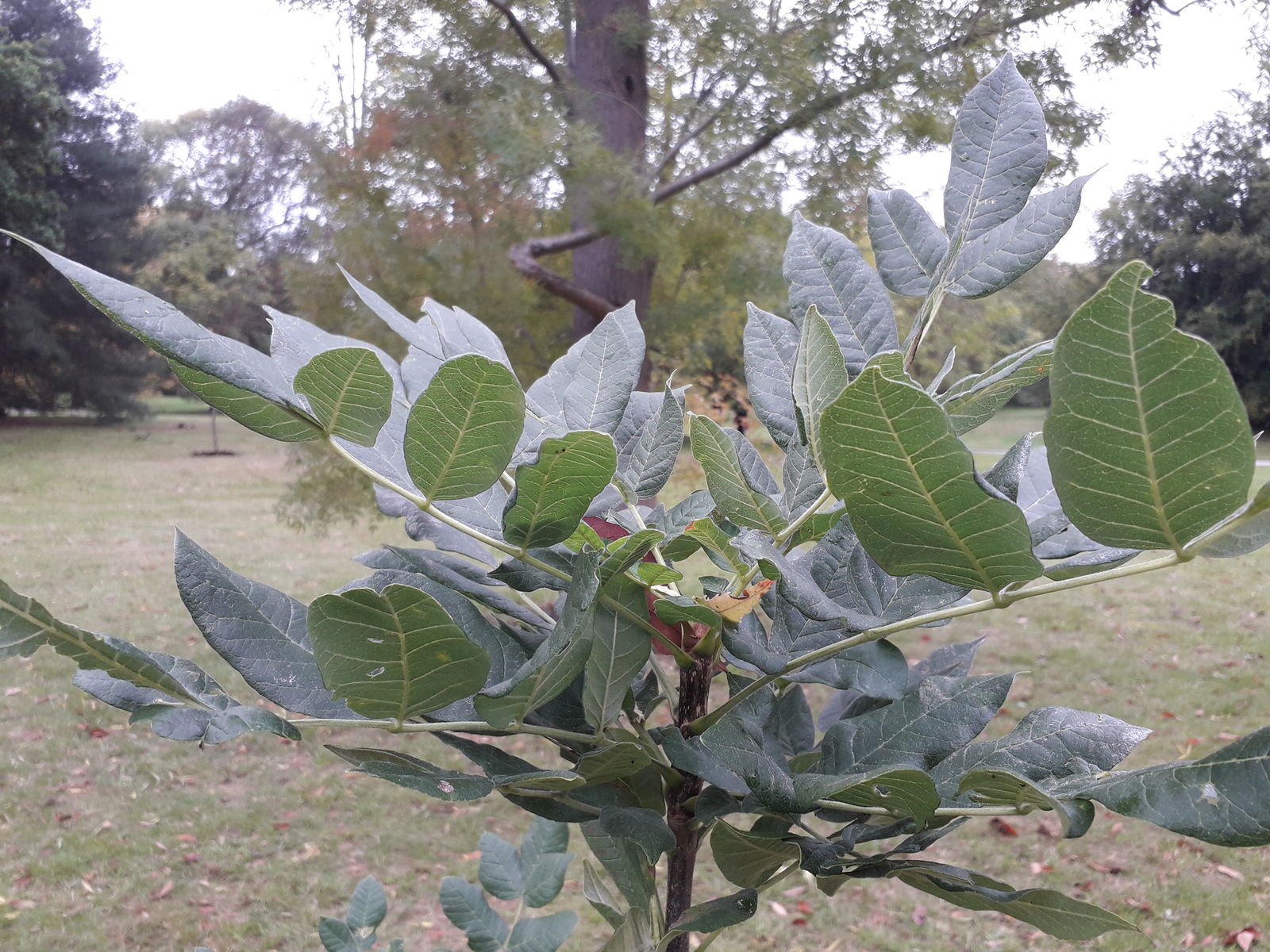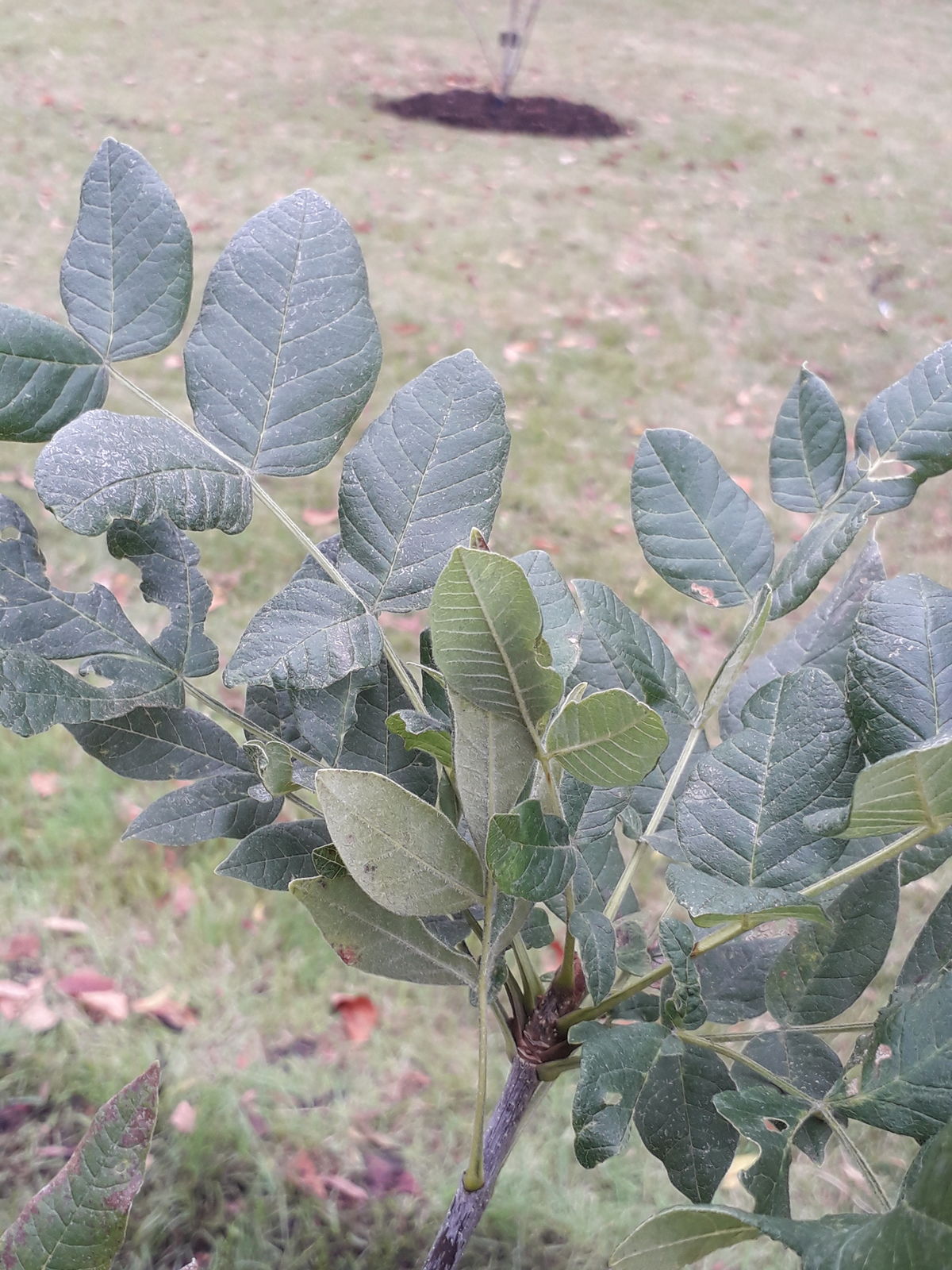Family: Oleaceae
Author: Benth.
Bibliography: Bot. Voy. Sulphur: 33 (1844)
Year: 1844
Status: accepted
Rank: species
Genus: Fraxinus
Vegetable: False
Observations: SW. Canada (Vancouver I.) to California
Description
The Oregon ash, known scientifically as Fraxinus latifolia, belongs to the Oleaceae family. This tree species graces landscapes from southwestern Canada, specifically Vancouver Island, down through the diverse biomes of California.
Fraxinus latifolia was first cataloged by the eminent botanist Bentham in the 1844 volume of Botanical Voyages on the Sulphur, where it was meticulously described along with other native flora. The Oregon ash typically thrives in riparian environments, favoring moist soils near rivers and wetlands where it can best showcase its distinguished features.
Characterized by its compound leaves and robust stature, the Oregon ash reaches impressive heights, providing ecological benefits such as habitat for wildlife and contributing to soil stabilization through its extensive root system. Its foliage appears in opposite pairs and is divided into several leaflets, offering a delicate, airy canopy that filters sunlight. In the fall, the leaves turn golden yellow, adding a splash of color to the landscape.
Moreover, this species produces slender, winged fruits called samaras, which contain seeds designed for wind dispersal, ensuring the propagation of future generations. The Oregon ash’s wood is valued for its strength and flexibility, making it a popular choice for various practical applications, including tool handles and furniture.
Ecologically, the Oregon ash plays a crucial role in the regions it inhabits. It provides essential services such as creating habitat for various bird species and other wildlife, contributing to the overall biodiversity and health of its ecosystem. As climate change and habitat destruction threaten many native species, the conservation of Fraxinus latifolia remains an imperative task for maintaining ecological balance and preserving natural heritages in North America’s western landscapes.
Whether admired for its grace or its utilitarian value, the Oregon ash stands as a testament to the intricate beauty and utility of native plant species.
Common Names
Eng: oregon ash
Deu: oregon-esche
Fra: frêne d’orégon, frêne de l’oregon, frêne à larges feuilles
En: Oregon ash
Ar: مران عريض الأوراق
Zh: 俄勒岡梣樹
Et: Oregoni saar
Fi: Oregoninsaarni
Fr: Frêne de l’Oregon, Frêne d’Orégon, Frêne à larges feuilles
De: Oregon-Esche
Hu: Oregoni kőris
Synonyms
- Fraxinus oregona var. glabra (Lingelsh.)
- Fraxinus oregona f. pulverulenta (Dieck ex Beissn.)
- Fraxinus americana subsp. oregona ((Nutt.) Wesm.)
- Fraxinus oregona var. latifolia ((Benth.) Lingelsh.)
- Fraxinus oregona (Nutt.)
- Fraxinus californica (Dippel)
- Fraxinus oregona var. riparia (Nutt.)
- Fraxinus pennsylvanica subsp. oregona ((Nutt.) G.S.Mill.)
Distribution
- British Columbia (native)
- California (native)
- Oregon (native)
- Washington (native)
Additional Images
Habit
Taken Feb 28, 2016 by EOL − matthew_salkiewicz (cc-by-nc)
Taken Dec 1, 1998 by EOL − Charles Webber (cc-by-nc-sa)
Taken Oct 15, 1998 by EOL − Charles Webber (cc-by-nc-sa)
Taken Oct 26, 2015 by EOL − nwallace12 (cc-by-nc)
Taken Dec 28, 2020 by Shehadi Ramiz (cc-by-sa)
Leaf
Taken Jun 1, 2020 by Derek Fleming (cc-by-sa)
Taken Dec 28, 2020 by Shehadi Ramiz (cc-by-sa)
Taken Sep 4, 2020 by Marilyn Lerner (cc-by-sa)
Taken Dec 8, 2002 by Jordi Gómez (cc-by-sa)
Taken Sep 24, 2020 by Nelly D (cc-by-sa)
Bark
Taken Aug 7, 2014 by EOL − Zoya Akulova (cc-by-nc)
Taken Dec 2, 2008 by EOL − Keir Morse (cc-by-nc-sa)
Taken Sep 25, 2014 by Tela Botanica − Pierre Bonnet (cc-by-sa)
Taken Sep 25, 2014 by Tela Botanica − Pierre Bonnet (cc-by-sa)
Taken Dec 28, 2020 by Shehadi Ramiz (cc-by-sa)

© copyright of the Board of Trustees of the Royal Botanic Gardens, Kew.

© copyright of the Board of Trustees of the Royal Botanic Gardens, Kew.

© copyright of the Board of Trustees of the Royal Botanic Gardens, Kew.
Flower
Taken Jul 22, 2014 by EOL − Regino Rodriguez (cc-by-nc)
Taken Oct 15, 1998 by EOL − Charles Webber (cc-by-nc-sa)
Taken Dec 2, 2008 by EOL − Keir Morse (cc-by-nc-sa)
Taken Dec 2, 2008 by EOL − Keir Morse (cc-by-nc-sa)
Taken Feb 28, 2016 by EOL − matthew_salkiewicz (cc-by-nc)
Fruit
Taken Sep 25, 2014 by Tela Botanica − Pierre Bonnet (cc-by-sa)
Taken Nov 16, 2015 by EOL − Don Loarie (cc-by)
Taken Sep 25, 2014 by Tela Botanica − Pierre Bonnet (cc-by-sa)
Taken Sep 25, 2014 by Tela Botanica − Pierre Bonnet (cc-by-sa)
Taken Sep 25, 2014 by Tela Botanica − Pierre Bonnet (cc-by-sa)
Sources
- WFO (No URL)
- IPNI (No URL)
- GBIF (https://www.gbif.org/species/3172343)
- POWO (http://powo.science.kew.org/taxon/urn:lsid:ipni.org:names:609072-1)
- PlantNet (https://identify.plantnet.org/species/the-plant-list/Fraxinus latifolia Benth.)
Specifications
Growth form>: Single Stem
Growth habit>: Tree
Growth rate>: Moderate
Growth
Ph maximum: 7.0
Ph minimum: 4.8

























